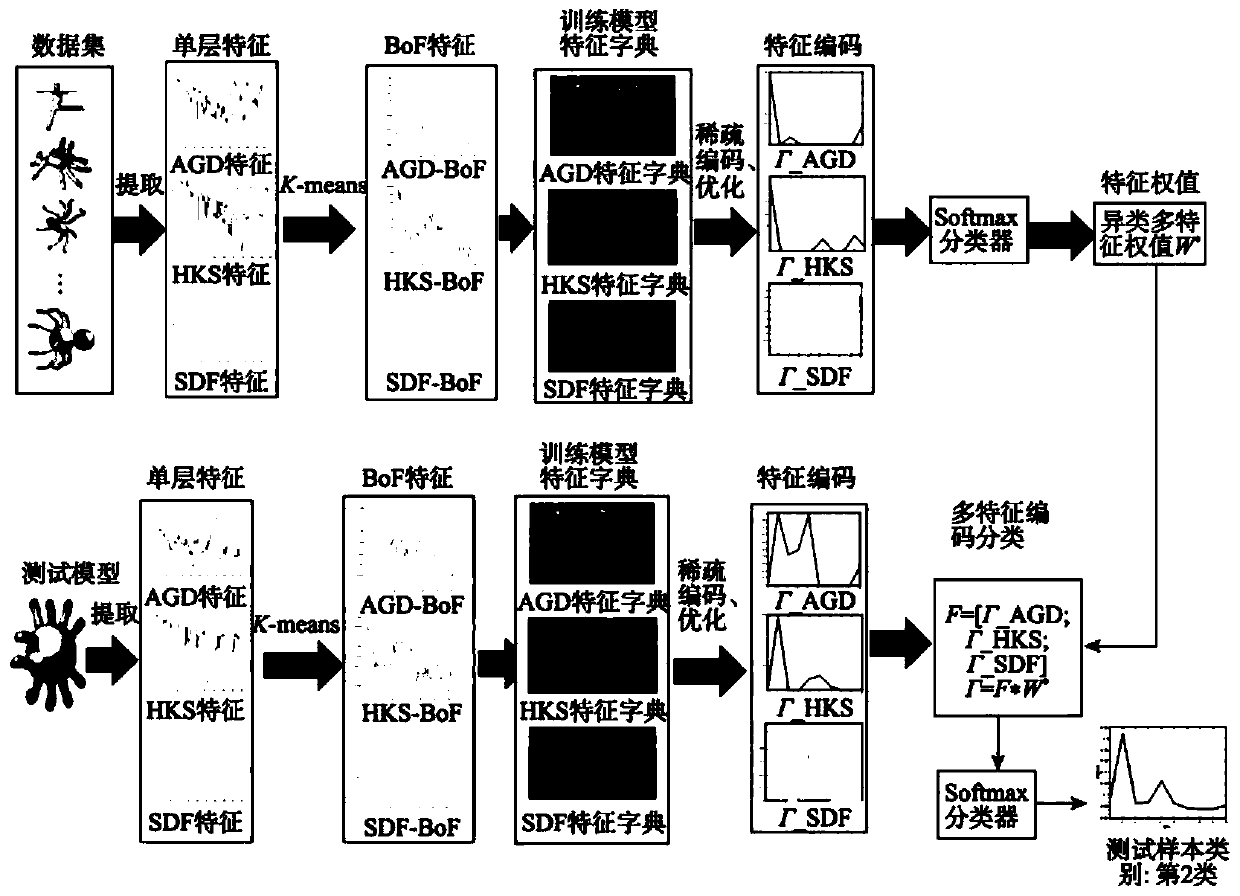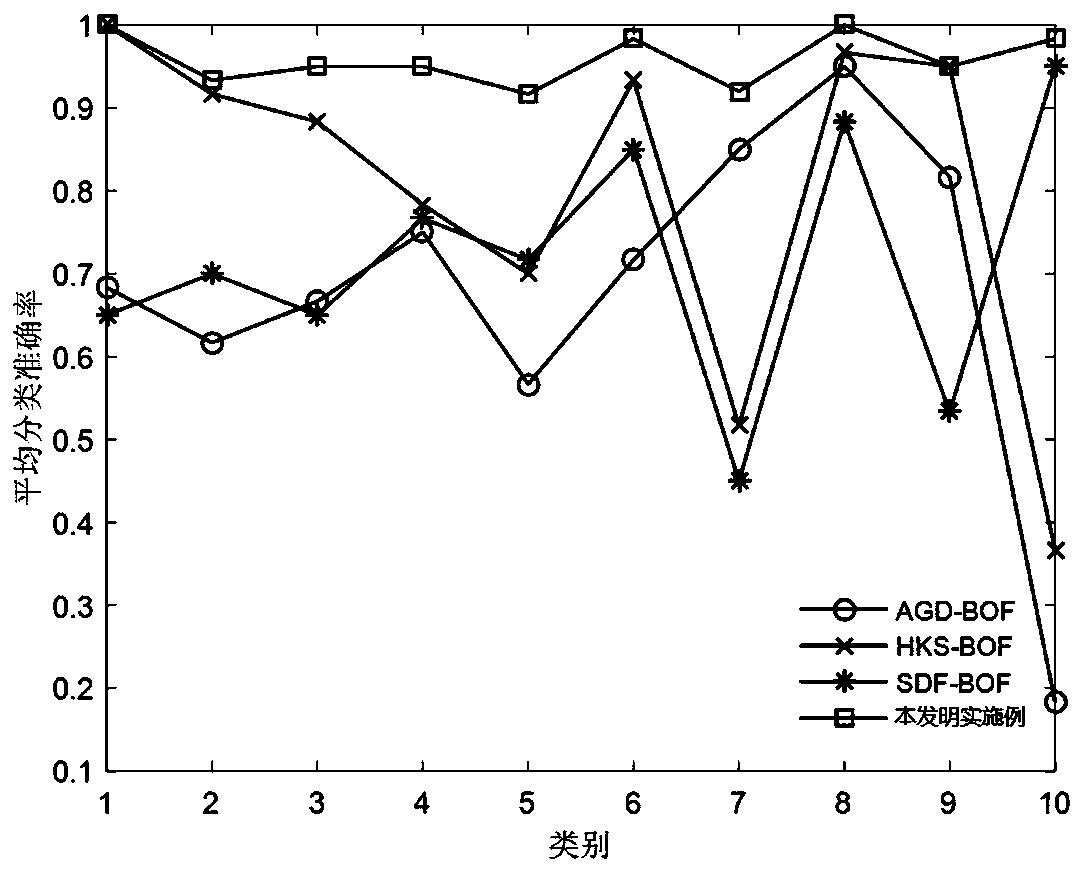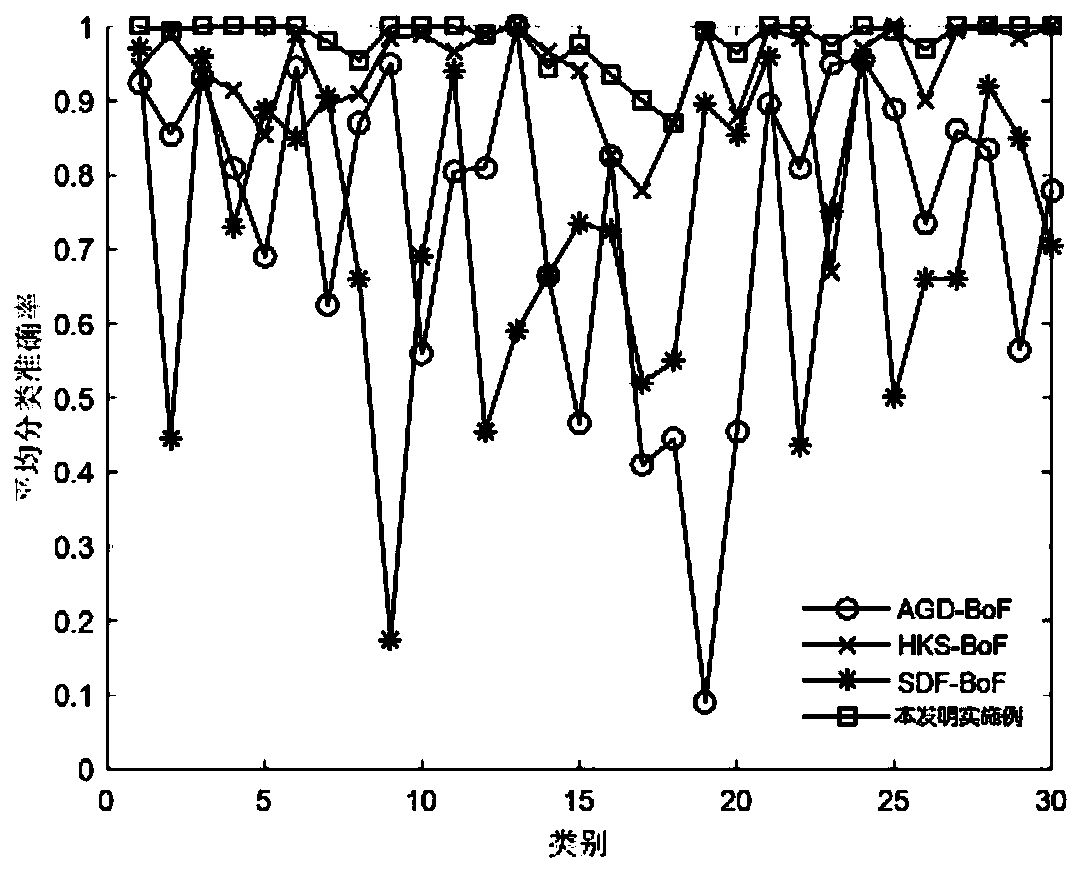Non-rigid three-dimensional model classification algorithm based on adaptive sparse coding fusion
A three-dimensional model, sparse coding technology, applied in the field of non-rigid three-dimensional model classification algorithm, can solve the problem that the feature descriptor is difficult to apply to all models, the structure of the three-dimensional model is complex, the scope of application is narrow, etc., to achieve a wide range of applications, high recognition accuracy The effect of high rate and strong robustness
- Summary
- Abstract
- Description
- Claims
- Application Information
AI Technical Summary
Problems solved by technology
Method used
Image
Examples
Embodiment Construction
[0035] The non-rigid three-dimensional model classification algorithm of the self-adaptive sparse coding fusion of the present invention is as follows: figure 1 As shown, follow the steps below:
[0036] a. Select the 3D model training sample set T;
[0037] b. Let the undirected weighted graph G(V,E) represent the 3D model sample M, where V represents the vertices of the 3D model, and E represents the set of edges between the vertices of the 3D model, and extract the average geodesic distance of the 3D model sample M AGD, thermonuclear HKS and shape-diameter function SDF;
[0038] c. Use the bag-of-features model method to construct intermediate-level bag-of-features representations for the extracted average geodesic distance AGD, thermonuclear HKS, and shape-diameter function SDF, namely AGD-BoF, HKS-BoF, and SDF-BoF. Proceed as follows:
[0039] c.1 Let S={s 1 ,s 2 ,...s N}∈R p×N is the low-level geometric feature of the average geodesic distance AGD, p is the vertex...
PUM
 Login to View More
Login to View More Abstract
Description
Claims
Application Information
 Login to View More
Login to View More - R&D
- Intellectual Property
- Life Sciences
- Materials
- Tech Scout
- Unparalleled Data Quality
- Higher Quality Content
- 60% Fewer Hallucinations
Browse by: Latest US Patents, China's latest patents, Technical Efficacy Thesaurus, Application Domain, Technology Topic, Popular Technical Reports.
© 2025 PatSnap. All rights reserved.Legal|Privacy policy|Modern Slavery Act Transparency Statement|Sitemap|About US| Contact US: help@patsnap.com



